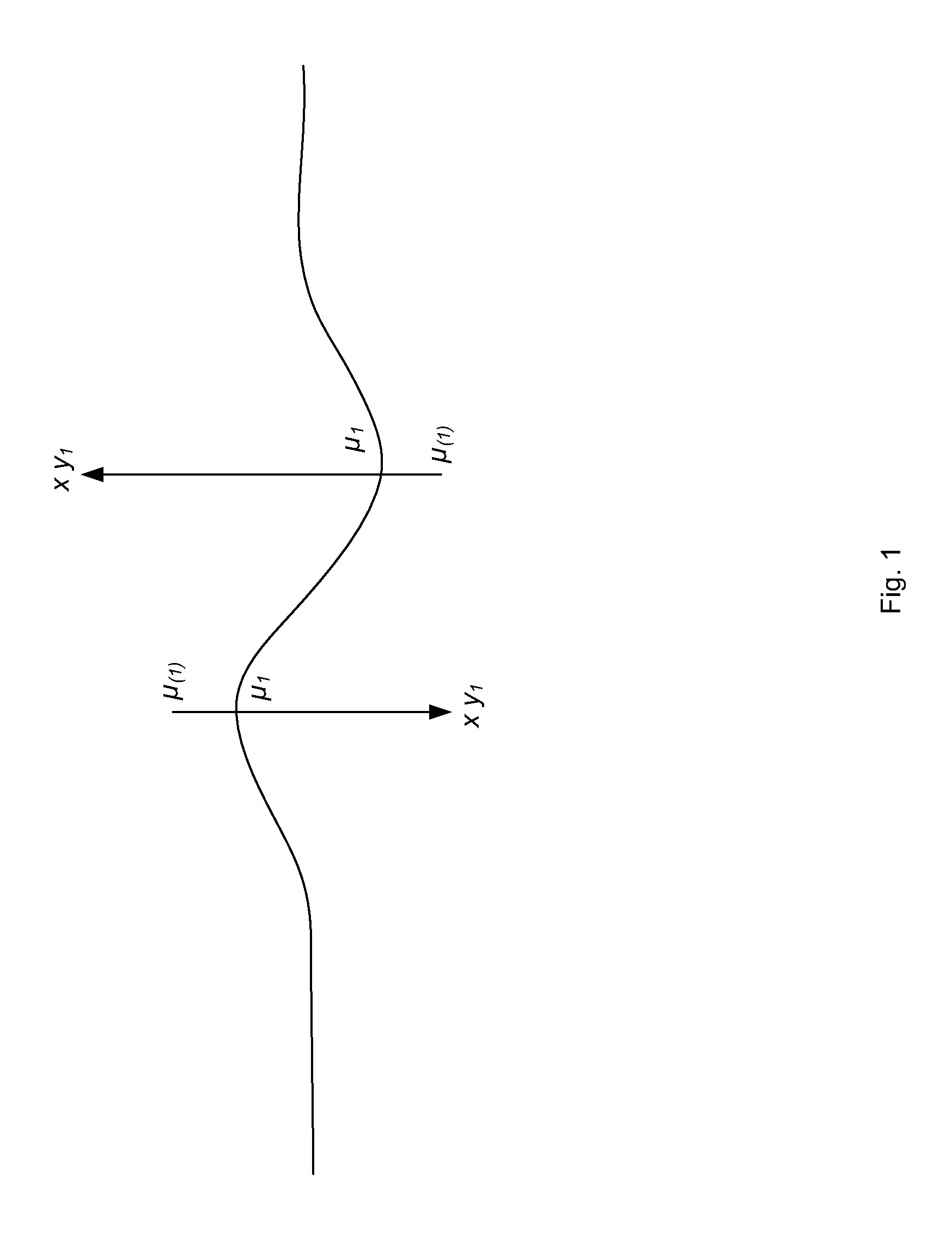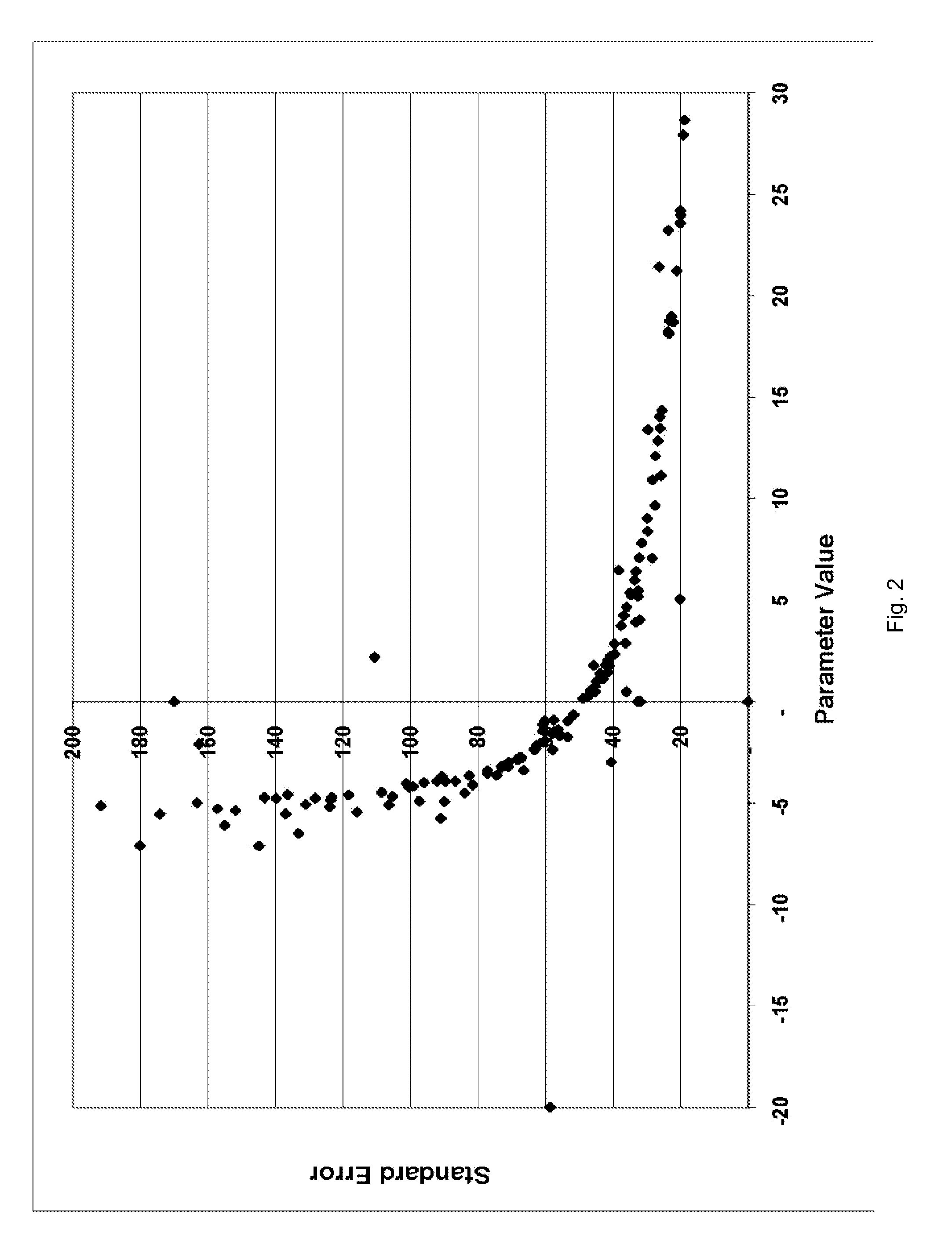Method and Apparatus for Analysing Data Representing Attributes of Physical Entities
a physical entity and attribute technology, applied in the field of electronic data analysis, can solve the problems of providing apparent comfort, not necessarily clear how to correct for any overfitting, and the range of observations that any modelling data contains, and achieve the effect of accurate prediction
- Summary
- Abstract
- Description
- Claims
- Application Information
AI Technical Summary
Benefits of technology
Problems solved by technology
Method used
Image
Examples
Embodiment Construction
2. Case Deletion
2.1 Elimination of Outliers by Case Deletion
[0063]2.1.1 Using a measure of residuals such as the Cook's Statistic, Outlier points can be excluded from the model based on their undue influence on the parameter estimates.
[0064]2.1.2 This technique is supported by leading statistical packages, but for datasets of the scale currently in use, deleting outliers is an onerous and unproductive task.
[0065]2.1.3 In essence each data point acts to pull the model towards itself, and the exclusion of that point and refitting the parameters will result in a new set of parameter values and hence new “Case Deleted” Estimate for that data point. By definition that estimate will lie further from the observed data point than the estimate produced by the full model. This is illustrated in FIG. 1, where yi are the original datapoints, μi are the estimates of those datapoints generated initially, and μ(i) are the “Case Deleted” Estimates.
3. Calculation of “Case Deleted” Estimates
3.1 Formu...
PUM
 Login to View More
Login to View More Abstract
Description
Claims
Application Information
 Login to View More
Login to View More - R&D
- Intellectual Property
- Life Sciences
- Materials
- Tech Scout
- Unparalleled Data Quality
- Higher Quality Content
- 60% Fewer Hallucinations
Browse by: Latest US Patents, China's latest patents, Technical Efficacy Thesaurus, Application Domain, Technology Topic, Popular Technical Reports.
© 2025 PatSnap. All rights reserved.Legal|Privacy policy|Modern Slavery Act Transparency Statement|Sitemap|About US| Contact US: help@patsnap.com



